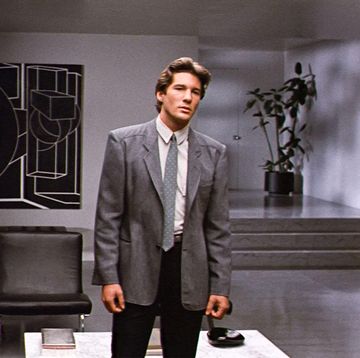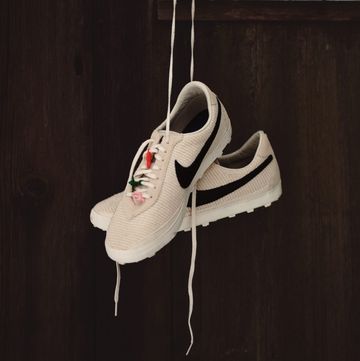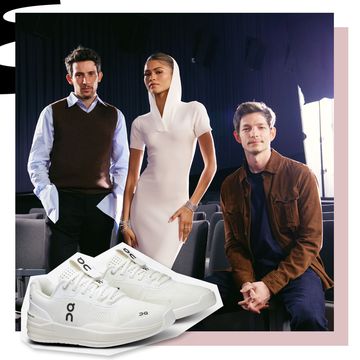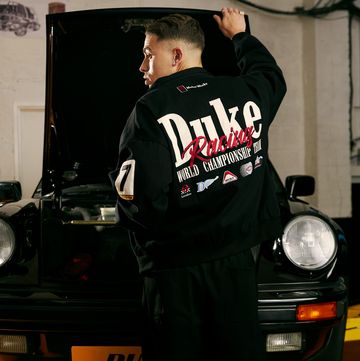Arthur Huang, CEO of design group Miniwiz, is a designer and trained architect. He's been working with Nike for the better part of a decade, helping the company create NikeLab spaces and making its processes and products more sustainable. But here's the thing: He doesn't really like design. And there's a reason.
"When you first get inspired to study design or architecture or engineering, you think you're trying to change the world for the better," Huang says. "Unfortunately, you see your colleagues, you see your professors, you see how things are being designed and manufactured, and you get quite sick. There's a lot of waste."
Everyone wants to create something new, to make an impact on the design world with their unique shapes and special materials. But as Huang describes it, that misses the point of what great design should be. Great design should solve problems, not create them, and in 2017 the biggest issue facing the world is the health of our environment. And using brand-new materials isn't helping. Yes, it perpetuates an intellectual conversation, but it ignores the needs of the world—needs design should be searching to meet. In fact, Huang doesn't even like to use the word "sustainable," because it's not quite accurate. Instead he prefers "anti-disposable." This idea of anti-disposability is at the heart of what he does and why he's such a great partner for Nike.
Huang normally does his work with Nike behind the scenes, but just recently the Swoosh put him front and center after it invited him to create an Air Max 1 for Air Max Month in March. He made sure to get recycled materials into the EVA midsole and use Flyknit that incorporates recycled materials in the knit, but Huang created more than just the shoe. 40 percent of a product's carbon footprint comes from shipping it, so no matter how much we minimise what goes into a pair of shoes, brands need to rethink how they bring it to customers.
Some of the most disposable things we come in contact with when buying trainers are all the cardboard shoe boxes that pairs come in and are, shockingly, not recyclable (the coating added to the boxes in the printing process makes them useless for reuse). But Huang sees this as a way in to shift the industry, even though Nike is already quietly committed to sustainability.
"A lot of Nike product, they downplay the sustainability message because they think the consumer won't buy them," Huang explains. "I feel very sad about that, so I proposed that we reflect the sustainability through the space. Now we are doing it through packaging. Maybe in the future it will be a whole line of products." The result is Huang's "Air Bag," a plastic box for his Air Max 1s that double as a bag with the addition of a simple rope. Plus the boxes can be stacked solidly to replace traditionally wrapped palettes for transport, they can be arranged into an installation for a store, and then even reused for the next release.
"This is the beginning of a packaging revolution," says Huang. "Then next is the content of the packaging. So what's interesting is the innovation part. The shoes are packaging the feet, the box is packaging the shoe, so it's all apart of an ecosystem. What they were trying to do [in the 1980s with the Air Max 1 was] trying to use innovation to effect the ecosystem. We're trying to do the same, I think."
These Air Bags are made from 100 percent recycled polypropylene, the cleanest recyclable plastic in the industry. "Polypropylene is the least carbon footprint material period," Huang explains. It uses "the least amount of water" during production, and has "less toxicity than paper." Every Air Bag is the result of recycling 180 disposable coffee cup lids. Even when the paper coffee cup is not recyclable—it's not; the waterproofing makes it trash, they're paper because the feel of paper tested well with a focus group one time—at least the lids can be turned into the shoebox of the future.
There's also a big black hole in the industry that has yet to be filled: shipping. Most big brands make their sneakers in Asia, where they're boxed and shipped on cargo ships over the Pacific. The way to change that is local manufacturing and local sourcing. "We use the dumbest manufacturing method," Arthur explains. "The whole idea [with the Air Bag] is we can send the design file to any injectors, we can take the materials from any collectors who collect polypropylene, they can make this product. You can really enable local collections and local manufacturing." It can be produced locally with locally sourced materials in the U.S., in Europe, in Taiwan, in Japan, in China. No shipping necessary.
The issue here isn't necessarily that we don't know how to make sneakers out of recycled or reused materials, or how to make a manufacturing process that's sustainable. It's that brands are afraid that these changes will make their products undesirable. The way to shift that, Huang explains, is customisation. "Nobody needs to tell you what you should look like now," says Huang. "Recycled material can offer you creativity in the product you buy, and the product becomes more valuable because of your creativity. That is the future."















